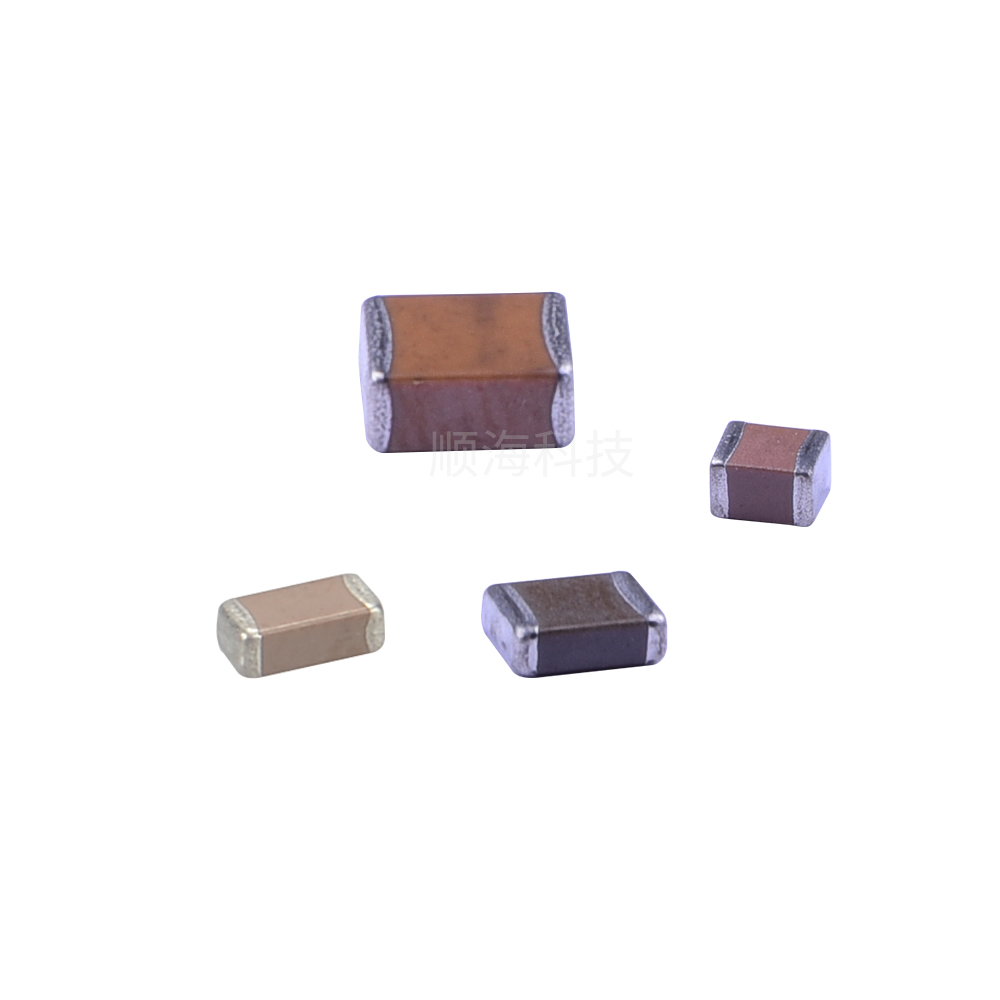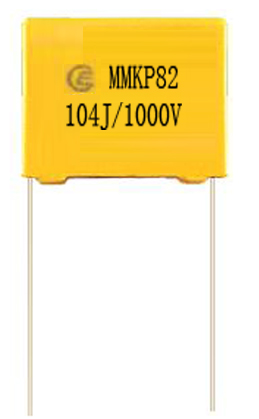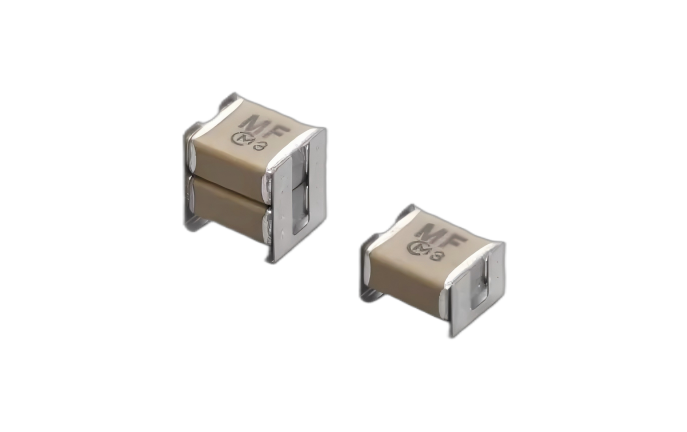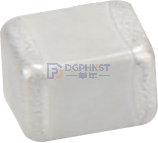High voltage capacitors (usually referring to rated voltages above 1kV) play a crucial role in electronic circuits, with their core functions being to safely store and release high electrical energy, block DC high voltage, couple AC signals, and suppress high-voltage transients. Their application scenarios mainly focus on fields that require processing or generating high voltage, large energy, or high voltage isolation. The following are some of the main categories of application circuits:
Power conversion and power supply circuit:
Buffer/Absorption Circuits in Switching Power Supply (SMPS): When the MOSFET or IGBT is turned off, the voltage at both ends will sharply rise (dv/dt), which can easily cause voltage spikes and electromagnetic interference (EMI). High voltage capacitors and resistors are connected in series and parallel across switch tubes or rectifier diodes to absorb this peak voltage, protect switch devices, and reduce EMI. Its mechanism of action is to provide a transient current path, delaying the rate of voltage rise.
Power factor correction circuit (PFC): In boost PFC circuits, high-voltage electrolytic capacitors or thin-film capacitors are used as output filtering capacitors to directly withstand the boosted high DC bus voltage (usually 380V DC or higher). It is responsible for smoothing and rectifying the pulsating DC, providing stable high-voltage DC output, and storing energy for subsequent circuit use. Its capacity and withstand voltage value are crucial.
Resonant converter (such as LLC): In resonant topologies such as LLC, high-voltage capacitors (usually thin film capacitors) are used as resonant capacitors. It forms a resonant network together with the inductor, realizing soft switching of the switching tube (zero voltage turn-on ZVS or zero current turn off ZCS), greatly reducing switching losses, improving efficiency and power density. The capacitance value directly affects the resonant frequency.
X capacitor (safety capacitor): a high-voltage thin film capacitor connected across AC input lines (L-N), used to suppress differential mode interference. It must comply with strict safety standards (such as IEC/UL 60384-14), have high withstand voltage levels (such as X1, X2 levels), and fail safe features (open circuit after failure to prevent short circuit and fire).
Power Electronics and Energy Conversion:
DC Link Capacitors: This is one of the most essential applications of high-voltage capacitors in frequency converters, inverters (such as solar inverters, motor drives, UPS), and HVDC converters. It is connected in parallel to the high-voltage DC bus at the output of the rectifier or the input of the inverter.
Function: Absorb pulsating current from the rectifier bridge and provide a low impedance and stable DC voltage source for the inverter; Store energy and provide or absorb instantaneous power during load transients to maintain bus voltage stability; Limit voltage ripple on the DC bus.
Requirements: Requires extremely high withstand voltage (hundreds to thousands of volts), large capacity, low equivalent series resistance (ESR), low equivalent series inductance (ESL), as well as long lifespan and high reliability. Metallized polypropylene film capacitors (MKP) are the mainstream choice for this application.
IGBT/MOSFET absorption capacitor: similar to the buffer circuit in SMPS, but with higher power levels. Parallel connection between the collector emitter (C-E) of high-voltage high-power switching devices (IGBT modules), absorbs the turn off voltage spikes during the switching process, and protects expensive power devices.
Pulse formation and discharge circuit:
Flashlight/strobe light circuit: High voltage capacitors (usually electrolytic capacitors) are charged to several hundred volts DC voltage through a charging circuit. When triggered, the capacitor discharges instantly through the triggering transformer and flash tube, producing a strong flash. The energy stored in capacitors directly determines the intensity and duration of the flash.
Laser power supply (pulse type): supplies power to pulse lasers (such as YAG lasers). High voltage capacitors store energy and generate high-power laser pulses in a very short period of time through laser pumping sources (such as xenon lamps, semiconductor laser diode arrays) or direct discharge through laser media. Require capacitors to have high energy storage density, low ESR, and fast discharge capability.
Defibrillator: In medical equipment, high-voltage capacitors store up to thousands of volts of electrical energy and release precisely controlled electrical pulses to the patient's heart through electrodes when needed to terminate fatal arrhythmias.
Electromagnetic pulse/electromagnetic forming: In industrial processing or scientific research, the use of high-voltage capacitors to instantaneously discharge and generate strong pulse currents, forming a strong magnetic field or performing material forming/welding.
High voltage isolation and signal coupling:
Voltage divider of high-voltage probe: The oscilloscope high-voltage probe uses precision high-voltage capacitors (forming an RC voltage divider network with resistors) inside to attenuate the high-voltage signal to be measured proportionally to the safe input range of the oscilloscope. The stability and frequency response of high-voltage capacitors are crucial.
RF power amplifier (such as broadcast transmitter, microwave magnetron power supply): In some high-voltage RF circuits, capacitors are used to couple RF signals to high-voltage electrodes (such as vacuum tube anodes) while isolating DC high voltage. Capacitors need to have both high withstand voltage and good high-frequency characteristics (low loss, high self resonant frequency).
Piezoelectric ceramic driver: Driving piezoelectric ceramic actuators (such as precision positioning platforms and inkjet print heads) requires high voltage (tens to hundreds of volts) and low current driving signals. High voltage capacitors can be used for energy storage and filtering, and sometimes also participate in the formation of driving waveforms.
Protection and filtering:
Y capacitor (safety capacitor): a high-voltage ceramic or film capacitor that is connected across the AC input line (L or N) and the equipment protection ground (PE) to suppress common mode interference. It must also comply with strict safety standards (Y1, Y2 levels), and the key parameter is that the leakage current must be very small (usually<0.25mA) to ensure personnel safety.
EMI/RFI filter: The high-voltage X capacitor and Y capacitor are the core components that make up the AC input EMI filter, jointly suppressing the interference introduced by the power grid and the interference generated by the switching power supply and transmitted back to the power grid.
Surge protection/overvoltage protection circuit: sometimes used in conjunction with varistors (MOVs), gas discharge tubes (GDTs), or transient voltage suppression diodes (TVS). High voltage capacitors can absorb voltage surges of slightly longer duration or serve as backup protection, but their response speed is usually not as fast as TVS or GDT. In spark gap protection circuits, capacitors also play a critical role.
Summarize key characteristics and selection considerations:
High voltage resistance: a core characteristic that must have sufficient margin (usually 1.5-2 times the operating voltage).
Low loss/low ESR/low ESL: It is crucial for high-frequency switching applications (such as switching power supply buffering, resonant capacitors, DC Link), as it affects efficiency, temperature rise, and the lifespan of the capacitor itself.
High reliability/long lifespan: especially in critical fields such as industry, healthcare, and automotive. Electrolytic capacitors need to pay attention to operating temperature and ripple current; Thin film capacitors typically have a longer lifespan.
Safety certification: In applications involving AC power grids (X capacitors, Y capacitors), specific types of capacitors that comply with safety standards (UL, IEC, CQC, etc.) must be used.
Energy storage density: It is important in pulse discharge applications such as flashlights, lasers, and defibrillators, where electrolytic capacitors have advantages.
Dielectric material: determines many properties of capacitors. Common high-voltage capacitor media:
Ceramic (MLCC): High voltage chip type, commonly used in small capacity and high voltage applications (such as Y capacitors, RF coupling), but with relatively small capacity voltage product.
Thin films (polyester PET, polypropylene PP, polyphenylene sulfide PPS): PP (especially metalized MKP) have excellent comprehensive properties (low loss, high voltage resistance, self-healing), and are the mainstream choice for DC Link, resonance, buffering, and X/Y capacitors. PET has low cost but high loss. PPS is resistant to high temperatures.
Electrolysis (aluminum electrolysis): With a large unit volume capacity (high energy storage density) and low cost, it is commonly used for high-voltage energy storage (flash lamps, power output filtering). But the ESR is relatively high, and the lifespan is greatly affected by temperature and ripple current.
Supercapacitors/double-layer capacitors: Although the individual voltage is not high (usually<3V), it can be connected in series to achieve high voltage and is used in energy storage applications that require extremely large capacity (unlike traditional high-voltage capacitor applications).
High voltage capacitors are essential components for achieving efficient, safe, and reliable high-voltage and high-energy processing. Their selection and application design directly affect the performance and safety of the entire system. Understanding its core role in specific circuits (energy storage, filtering, resonance, buffering, coupling, protection) is the key to proper application.




